Stone Marshall's Blog, page 124
December 11, 2017
Did From Software Just Tease Bloodborne 2?
Tonight at the 2017 Game Awards, From Software offered up a very, very brief teaser of its next title. The teaser shows something bloody—an arm that’s also a weapon?—being tightly wound, with the tagline of “Shadows Die Twice”.
Whatever it is, the game is definitely not a new Armored Core. It could be another Souls game, but this brief showing feels like it would fit right at home in the universe of Bloodborne. Maybe we’ll see more at the 2017 PlayStation Experience keynote
Assassin’s Creed Origins’ Update Lets You Ride In Final Fantasy Style
Back in October, Square Enix put on the Assassin’s Festival in Final Fantasy 15, letting players pick up gear and costumes inspired by the Assassin’s Creed series for Noctis and crew. Now it’s time for Ubisoft to offer its side of the crossover.
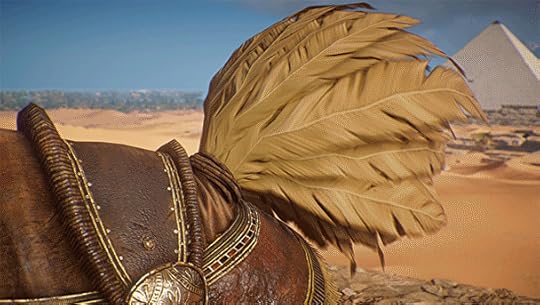 A small tease…
A small tease…Ubisoft recently released notes for Assassin’s Creed: Origins‘ December update. The update will add a brand-new quest that looks to offer up a Chocobo-inspired horse for Bayek to ride around Egypt.
The update adds the third of the Trials of the Gods, pitting Bayek against three Egyptian deities. Anubis and Sobek were in November, and the final fight is against Sekhmet, the warrior goddess. Players who missed the first two fights will also get the chance to take them down.
This patch also brings with it a new Nightmare difficulty mode, an enemy level-scaling option for the entire game, and a brand-new, gladiator-based Horde Mode.
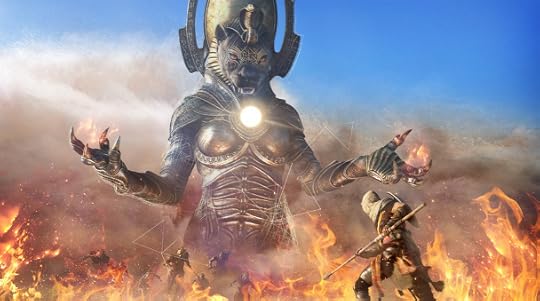
“The event quest, Here Comes a New Challenger, will introduce you to Horde mode to satisfy your warrior longings. You can prove yourself in the Cyrene arena against unlimited waves of foes. We recommend Level 32 or higher,” says Ubisoft.
The Gladiator Items Pack comes on December 12 with some gladiator-theme gear for Bayek, while the Wacky Items Pack will fit right in with the game’s bath towel costume.
There is currently no set date for the December update to drop on any platform. Assassin’s Creed: Origins is currently available on PC, Xbox One, and PlayStation 4.
Assassin’s Creed Origins’ Update Lets You Ride In Final Fantasy Style
December 10, 2017
Minecraft Players Are Choosing The Xbox One Edition Over The Better Together Version
Back in September, Microsoft and Mojang launched the Better Together update for Minecraft on Windows 10, Xbox One, iOS, and Android. This update allowed players on those devices to play together and access the Marketplace on any of those platforms.
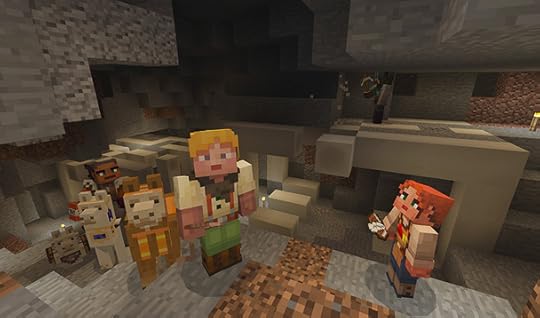
The new Better Together versions of Minecraft are known collectively as the Bedrock Edition. The Bedrock games avoid the “___ Edition” naming scheme on their respective platforms, being just “Minecraft” instead of “Minecraft: Pocket Edition” or “Minecraft: Windows 10 Edition”. This is the new foundation and codebase Mojang wants to build upon, hence the name.
In the case of Minecraft on Xbox One, if you purchase the game now on the Xbox Store, it’s the Bedrock Edition, called “Minecraft”. If you had the previous Minecraft: Xbox One Edition, you get the new version for free, but the old one remains installed on your console. This allows players to switch back and forth between both versions and players are finding they prefer the old Xbox One Edition.
If you go to the Microsoft Store page for Minecraft: Xbox One Edition, the game is rated at 4.5 stars out of 5 with 111,000 reviews. In contrast, the new Minecraft entry is rated at 2.5 stars out of 5, with 5,634 reviews as of this writing.
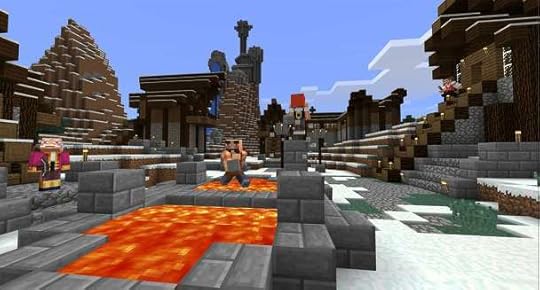
“The Xbox One Edition was designed for Xbox, this version is literally a port from PC. The creative inventory is a disarray and difficult to navigate, placing blocks is much slower as being precise is terribly difficult. The graphics are a disgrace, the game crashes every 30 mins, everything is laggy,” said one review. (Edited for spelling and formatting.)
“The new crafting and inventory menus are quite cumbersome and seem rushed. It now takes easily twice as long to perform trivial tasks like swapping items in these menus in creative mode. The previous setup was much more streamlined and easier to use,” added another review.
“I played this version in beta and it was not ready for a public release. There are numerous problems that went unaddressed or were flat out ignored. To list a few: Frame rate is extremely unstable and drops considerable. This version is not optimized for redstone and more complicated devices produce massive amounts of lag,” said one review from last month.
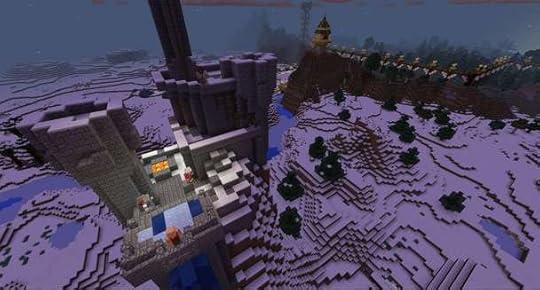
The previous Minecraft editions were customized for their specific platforms by 4J Studios, who no longer seem to be involved in the new versions. They took into account the technology behind each console or device, and tailored the releases to those platforms.
Players are saying that the Bedrock Edition represents a step back. There are lost features like large biomes, some players dislike the new UI and Creative mode controls, there are reported frame rate issues, lag, and crashes that didn’t occur in previous editions, and some players can’t even convert their worlds over to the new version. One of the top requests on the Minecraft support site is for a console UI for the Bedrock Editions on Xbox One.
Players on Xbox One have gone around the problem by simply playing the old Xbox One Edition, but Mojang isn’t updating that version anymore. If players want new features, they’ll need to upgrade eventually. Currently, the Nintendo Switch version is supposed to join the Better Together party at a later date, but some Switch players are hoping that update can be pushed down the line until the Bedrock codebase has seen some fixes. Hopefully, Mojang and Microsoft keep plugging away at the new unified Minecraft, because players aren’t happy.
Minecraft Players Are Choosing The Xbox One Edition Over The Better Together Version
What computer should I buy to run Minecraft?
Could you provide an update to your previous articles on the system requirements for Minecraft? I would love a recommendation on a laptop for my 10-year-old son. I have a £500 budget, and I would have no problem with a refurbished device. Craig
This is a frequently-asked question, and similar queries have come from Jo (seven-year-old son, £450 budget), Lauren (13-year-old son), Ronda (12-year-old daughter), and Natalie (11-year-old son, £200 to £250 budget). I answered much the same question in December last year (What’s the best cheap laptop for running Minecraft?), in December 2015 (What’s the best laptop for running Minecraft?) and earlier. The principles have not changed, so you may still find them useful. However, the products change, which is why the question keeps coming up.
PC or not?
The main edition of Minecraft is written in Java, so it runs on PCs running Microsoft Windows, Apple’s MacOS, and Linux. Most parents want the same machine to cover schoolwork and other requirements on a budget, so they generally opt for Windows.
There’s also a “pocket” or Bedrock Edition of Minecraft that runs on Windows 10, games consoles, tablets, Gear VR, Apple TV and Amazon’s Fire TV. Many players want the main edition because the Bedrock version does not support “mods” or modding platforms such as Pixelmon.
Mojang is still busy programming the Bedrock Edition to add many of the capabilities of the main version, but without its performance being sandbagged by Java. There are already Add-Ons, Resource Packs and Scenarios to change Minecraft’s appearance and behaviour.
Bedrock is still some way from the Java version. Nonetheless, running Minecraft as a Windows 10 app is one way to run it on a less powerful laptop while still having a machine that’s good for school work. The latest Windows 10 Minecraft is available as a free trial app on the Windows Store, so it’s worth a go. You can always install the full version later.
Running Minecraft

Facebook Twitter Pinterest More is better … ‘Extra power will give you better frame rates, longer rendering distances, more textures etc, and the ability to run more mods.’ Photograph: Voisin/Phanie/REX
Most serious games can consume as many resources as you can throw at them, and Minecraft is no exception. Unfortunately, Minecraft also has to run the Java “virtual machine” (JVM) that runs the Minecraft code.
Today’s targets, for running Minecraft, are a relatively recent Intel Core i5 or i7 or equivalent processor, 8GB of memory, a 128GB SSD, and a 15.6in Full HD screen with a resolution of 1920 x 1080 pixels. By “relatively recent” I mean a 5th generation Core chip, or later. (We’re currently moving to 8th generation versions.)
In every case, more is better. Extra power will give you better frame rates, longer rendering distances, more textures etc, and the ability to run more mods.
You should still be able to run Minecraft pretty well on a recent Core i3 with 4GB of memory, either a 64GB SSD or a traditional hard drive, and a 1366 x 768 screen, though you may have to dial back some graphical effects.
However, you should still be able to run Minecraft on less powerful machines, if you use the lowest settings and install the Optifine mod to get a usable frame rate. (I assume everybody will install Optifine on whatever they buy.)
In previous years, I’ve looked for laptops with dedicated graphics cards with their own 2GB or more video RAM. Today’s mainstream laptops use the processor’s integrated graphics capabilities and the PC’s main memory instead. This makes it an even better idea to buy a desktop PC than a laptop for running Minecraft and other games.
Desktop towers have plenty of room for fans so they can use hotter processors that run faster than the laptop equivalents, and even cheap chips like the Intel Pentium G4560 become viable. Many desktops also have dedicated graphics cards, and if they don’t, you can probably install one in an empty expansion slot. (Check the upgrade options before you buy.)
Gaming laptops?
Most of the laptops that still have dedicated graphics cards are now described as “gaming laptops”, and they bust your budget. For example, Currys PC World has an HP Pavilion Power 15-bc350sa with a Core i7-7500U processor, 8GB of memory, a 1TB hard drive and an Nvidia GeForce GTX 950M for £679.99. That’s not a pocket money price. HP’s real “gaming laptop” is the Omen, which you can get with a GeForce GTX 1050 for £799.99.
Manufacturers used to sell reasonably affordable laptops with dedicated graphics cards, but those days appear to have gone.
You can hunt around for second-hand gaming laptops, but these are not the stock in trade of professional refurbishing companies. They mostly sell ex-corporate “fleet computers” such as ThinkPads, HP Elitebooks and Dell Latitudes. If you decide to go for a refurbished machine, an Elitebook might be the best bet.
Possible choices
Having eliminated games machines, we’re left with mainstream laptops. The usual suspects include Lenovo’s 110 and 320 models, HP Pavilions, and Asus VivoBooks. Take your pick …
The best specification I can find within a £500 budget is the Lenovo Ideapad 80XL035QUK, which has an i5-7200U, 8GB of memory, a 2TB hard drive and a 1920 x 1080 screen for £499.99.
There are lots of different Ideapad 310, 320 and 320S models around, and many of them have 128GB SSDs. Unfortunately, most of those only have 4GB memories and 1366 x 768 screens. You can increase the memory but they usually have only one memory slot. You have to remove the 4GB and insert an 8GB module (over £80), instead of simply adding 4GB (around £45). Switching to a 16GB module could cost roughly £165.
For someone on a smaller budget, the IdeaPad 310-15ISK is still good value at £329.95 from John Lewis. though you can find other sources by searching for 80SM01MAUK. It has a nippy Core i3-6100U processor, 4GB of memory, a 1TB hard drive and a 1366 x 768-pixel screen. The seventh-generation i3-7100U isn’t really any faster.
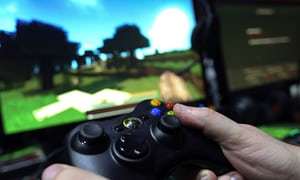
Facebook Twitter Pinterest Perhaps a new or second-hand XBox One is a good choice. Photograph: Bloomberg/Bloomberg via Getty Images
Currys PC World has a similar laptop with a slower Core i3-6006U processor for £299.98. This chip has a PassMark benchmark score of 3131, which is close to if not below the minimum required to run full Minecraft well. In fact, it’s better to have a chip that scores over 4000. For comparison, the latest Intel Core i7-8700K scores 16274.
There are a couple of 14in machines that are also worth considering for their 128GB SSDs. The HP Pavilion 14-bp070sa has a Core i5-7200U processor, 4GB of memory and a 1920 x 1080-pixel screen for £449. The Asus VivoBook X405 is a nicer laptop for £20 less, but it only offers a Core i3-7100U.
Low-end systems
Going below £300 involves a huge reduction in processing power, unless you can find a discounted bargain. The options include the slow AMD A6-9220 (PassMark 2368), the slower Intel Pentium N4200 (PassMark 2002), the Intel Celeron N3160 (PassMark 1695) and the Celeron N3060 (PassMark 990).
None of these processors is intended for gaming, or any serious computing.
The real problem is that if you stick to my recommended minimum of 4GB of memory, even low-end computers are not particularly cheap. For example, a 14in HP 14-bp066sa with a Celeron N3060 and 64GB of eMMC storage – which is slower than an SSD – costs £249 at Currys PC World. You are giving up a lot of processor speed and storage space to save £50. It’s really not worth it.
Dropping from an IdeaPad 320-14ISK with an i3-6006U processor (£299.98) to an IdeaPad 320-14IAP with a Pentium N4200 (£279.99) only saves £20.
The result is that I can’t recommend today’s low-end machines for playing the full version of Minecraft, even if – as mentioned above – they can run it at the lowest settings with Optifine. The “pocket” or Bedrock Edition would be a better bet, and even that would run better on a new or second-hand Xbox One.
If you can’t justify spending around £300, you could take a flyer on the Linx 12X64, which is now available for around £200. Eligible parents and students can get it for £179.99 from Microsoft.
The Linx 12X64 is a 12.5in tablet with a detachable keyboard and a slow Intel Atom x5-Z8350 processor (PassMark 1314), so it’s nobody’s idea of a games machine. However, at least it has 4GB of memory and 64GB of storage, so it’s not as cramping as most ultra-cheap machines, which have 2GB and 32GB. It even has a Full HD 1920 x 1080-pixel screen. I found it a decent and reliable machine at its original £299.99, so deducting £100 makes it a bit of a bargain.
December 9, 2017
Students can learn to code in Minecraft at workshops across Seattle this week
Hour of Code is a grassroots movement founded by national nonprofit Code.org to make coding more accessible.
As part of Computer Science Education Week, students around the world will participate in Hour of Code, a grassroots movement founded by national nonprofit Code.org to make coding more accessible. Millions of people have joined Hour of Code at home, at school, and at events in their communities, learning basic coding concepts through free one-hour tutorials.
For the third consecutive year, Minecraft and Microsoft have released a special Hour of Code tutorial in partnership with Code.org. The tutorial, Hero’s Journey, introduces a fun character called the Agent and 12 new challenges that teach core coding concepts like loops, debugging, and functions. So far, nearly 70 million Minecraft Hour of Code sessions have introduced coding concepts to learners in over 100 countries.
This week, museums and schools across Seattle are hosting special Hour of Code events for Computer Science Education Week. The Living Computers Museum + Labs is offering three Minecraft Hour of Code workshops, and Microsoft stores in Seattle, Bellevue and Redmond are hosting Hour of Code events for students and families.
In addition to Hour of Code, students are learning with Minecraft: Education Edition, a version of the game for classroom use that includes a special feature on coding. Melissa Wrenchey, a computer science and engineering teacher at Tesla STEM High School in Redmond, Washington, uses the game in her classroom to get her students learning coding concepts – and not just how to code their own games. For example, she uses tools like Redstone and MakeCode to incorporate algorithms, design thinking, engineering and even sustainable building concepts into a project. “We use Minecraft: Education Edition to do things like model the 2023 light rail system in South Kirkland. The tool allows for students to take the text description from Sound Transit and turn it into a scaled model of the station for the current Park and Ride location.”
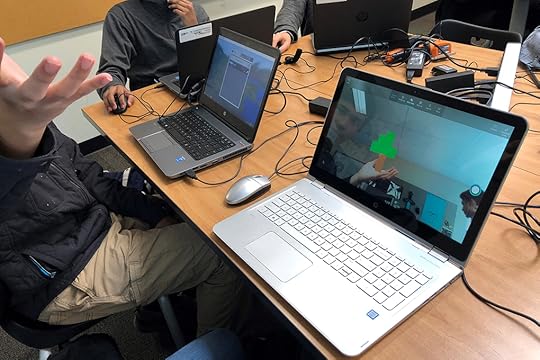 Students try out the Minecraft Tutorial in Tesla STEM High School in Redmond, Washington. (Microsoft)
Students try out the Minecraft Tutorial in Tesla STEM High School in Redmond, Washington. (Microsoft)Wrenchey says that it’s so important for students today to be comfortable with coding. “The world is changing quickly, and coding and logic activities are part of all our futures. We see more automation opportunities every day from self-driving cars to applications in restaurants for ordering and paying at the end of the meal. There will be huge needs for jobs like user-experience designers and cyber-security forensics engineers,” she says.
In fact, the World Economic Forum predicts that 65 percent of children who enter primary school today will work in jobs later that don’t even exist yet. There is a growing need for students to build skills that will help them succeed in the 21st century workplace. Coding empowers students to go from simply interacting with technology to building their own creations, including apps and games, and exploring STEM careers.
“We do a lot of different types of programming related to Hour of Code,” says the Living Computer Museum’s Education Coordinator Nina Arens. “In our workshops and field trips we work a lot with Scratch, Command-line workshops, micro:bit and mini-controllers that you can program. Along the way students learn project management, history of computing, intellectual property and think about art and design, in addition to learning the coding, the basic command line, conditionals and loops it takes to build a basic game,” she says. These types of skills can transform the way students think critically, express themselves and solve complex problems – and Hour of Code is a great place to start.
The Minecraft team at Microsoft has partnered with Seattle area schools and educators to create the new Hour of Code tutorial and features in Minecraft: Education Edition. Get started coding for free today at code.org/minecraft .
Students can learn to code in Minecraft at workshops across Seattle this week
Minecraft launches Realms Clubs, a new online meeting place for Realms
The Minecraft team yesterday announced the launch of Realms Clubs, a new online meeting place for members of Realms to share and socialize. With Minecraft Realms Clubs, players can share posts, like videos, photos, and comments, and much more.
Minecraft players can find Realms Clubs now on Minecraft for Xbox One, Mobile, and Windows 10. Clubs will automatically be created for a Realm, and anyone who is invited to a Realm will also be added to the Club. Players can manage Realm Clubs from the Xbox App on PC, mobile, or console, or directly from the Realms menu in Minecraft.
Screenshots can be posted to a Realm Club by pausing the game and hitting the button with the Camera icon next to the feed button. This will add the screenshot to your list of saved screenshots and your Realms Clubs feed. Please keep in mind you can manage your Club and report comments or block players if necessary.
The experience should also be safe for kids, as kids need permission from a parent to adjust their permissions to use Realms. More details on Realms CLubs and all the FAQ’s are available here.
Minecraft launches Realms Clubs, a new online meeting place for Realms
December 8, 2017
Wander the Lost City of Teotihuacán in Minecraft
The word Teotihuacán comes from the Aztecs and translates to birthplace of the gods. The ruined city was built in a hill-enveloped valley 2,000d years ago and collapsed around 550 CE. We know that Teotihuacán was the largest city in the Americas and one of the most populous on Earth in its heyday, but nearly everything else is a mystery. Who built it, what was their language, why did their great metropolis fail? The de Young Museum in San Francisco recently opened a show about the city titled Teotihuacán: City of Water, City of Fire. Objects form recent excavations are leveraged as a starting point to examine how the modern conception of the city is formed by surviving artworks. To build some buzz and expose more people to the show’s themes, the museum concurrently released a scale Minecraft map of the city. The map allows anyone with an internet connection (and $27 for a Minecraft account) to dive in and run around amid and within the unblemished splendor of the temples. In the words of the show’s curator Matthew H. Robb, “Hopefully that leads to a greater appreciation for the achievements of the people who built [Teotihuacán] in ancient times.”
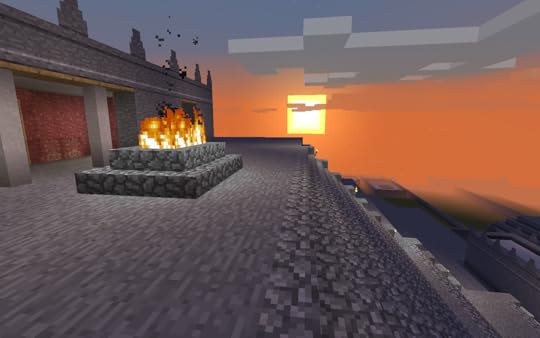 Scene from the Minecraft map of Teotihuacán
Scene from the Minecraft map of TeotihuacánThe map makes a good first impression. You begin in a room of red stone, columns, and a few torches. On the wall opposite is the name of the show and the museum in pale blue-green. I’m a Minecraft novice, so the very first thing I did was get a primer from my brother-in-law about the controls and whatnot. It’s standard gaming fare: Run, jump, punch, repeat. I was warned that doing something dumb like jumping off one of the buildings or immolating myself in one of the fire pits would lead to my doom. Armed with this new knowledge, I set out to explore.
Beyond a couple nice vantage points for screenshots, there wasn’t much to see. I think I started on the Pyramid of the Sun and walked along the Avenue of the Dead, but those are just guesses. I was basically turned around and directionless after running in and out of a few temples. Inside one of the temples is a small pool that my character appeared to swim through, but it was difficult to tell. Alcoves and torches and flowers and trees appear ad nauseum. The only place to interact with the environment (that I found, anyway) was with the show title and museum name on the wall. I punched it just before turning off Minecraft, and it became a painting in my inventory. But … there wasn’t anything to do beyond that.
Gameplay left me with so many questions. What temple did I start on? What did they burn in the fire pits? What were the pools for?
Using Minecraft to map Teotihuacán was a great idea and I genuinely felt like I was in the city. The experience left me less excited for a museum show and much more excited about the idea of planning a trip to see the ruins in person. The museum plans to maintain the map as part of its holdings and (I hear) is readying a future release with murals and art objects in situ. But that seems like something which should have been ready for the initial release. Since one of the walls is already labeled with the show’s name, it’d also be cool to be provided with the names of the temples and some kind of explanation about their functions.
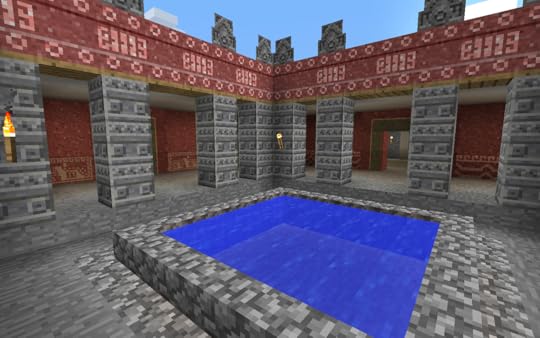 Scene from the Minecraft map of Teotihuacán
Scene from the Minecraft map of TeotihuacánAt present, the current iteration of the map rings a little hollow. Providing more opportunities for players to interact with the unblemished temples and bucolic environment will only serve to strengthen this ambitious and worthwhile project.
How kids used Minecraft to flood Ipswich CBD
FOR a year Ipswich children have spent countless hours digitally rebuilding the Ipswich CBD as it was more than 120 years ago.
The group of about 25 children used the 3D, interactive, and reportedly addictive, game Minecraft to reconstruct Brisbane St and surrounds as it was before the Great Flood of 1893.
On Wednesday, the children watched their hard work being washed away as the Great Flood was digitally recreated sending torrents of water through their city.
Siblings Ty, AJ and Jess Biffin were among the group that regularly attended the Minecraft sessions at Ipswich City Library.
Ty said while the whole experience was “really fun”, he wasn’t looking forward to Wednesday’s finale when the city was flooded.
“We spent a whole year building this awesome city centre and then it’s destroyed in a flood,” Ty said.
“All that hard work, gone. It’s heartbreaking.”
The Minecraft project is one of many interactive sessions run at Ipswich Library and one the Biffin children thoroughly enjoyed.
Mum Deb said the project not only taught the kids about working together to build the city, but gave them a new perspective on an historical event.
She said it helped them understood the real loss previous generations suffered during the Great Flood.
“It’s bitter sweet for them,” Deb said.
“The loss they are feeling is a virtual loss but it’s opened to the door to talking to them about the actual loss people had to endured back then.”
This was the second time the Biffin children took part in an ongoing activity at the library and they’re already keen for the next one.
December 7, 2017
‘Freddy Fazbear’s Pizzeria Simulator’ Is ‘FNAF 6’ in Disguise
Yesterday we talked about Scott Cawthon developing a Pizzeria Simulator that he “swore” was just a little minigame for the community, but, of course, no one bought that. And we were right to be skeptical because Freddy Fazbear’s Pizzeria Simulator is a Five Nights at Freddy’s [$2.99] game disguised as a minigame. (Spoilers) Once you start the game, you play through a simple minigame where you fling pizzas at little children until the whole game short circuits and you find yourself the owner of a new pizzeria that you have to decorate.
The decorating part is pretty simple: you can only buy a couple of items that you then get to place on the pizzeria floor. Your starting items are a box of balloons and a box of rubber balls. Each time you place an item, you get to play an associated minigame, and I do mean minigame. The box of balloons one has you clicking one button to win, and the rubber balls one has you trying to dive into the box (very difficult one that I’m not even sure you can beat). And then it’s time to let the guests come in and enjoy your masterpiece while you have to keep an eye on everything from the (you guessed it) control room.
This is where the actual game begins. FNAF players will immediately recognize the control room gameplay. You have to keep yourself safe from animatronics hidden in the pipes by using motion detectors and your flashlight. The whole time you’re in the control room, you have to try and keep the fan running as little as possible since it can block noise and lead to a lovely jump-scare. But if you turn that fan off, the temperature rises. So, you have to play it smart. You can also switch the power generator off to, again, reduce noise, but then you can’t run your computer the way you would want to.
If you make it through the night, you get to continue managing your pizza with new items and new minigames, and then it’s back in the control room. People on reddit have noticed that the save file for this game is called “FNAF6,” so many are already calling it FNAF 6. Overall, Freddy Fazbear’s Pizzeria Simulator is a fun take on the FNAF formula with some extra elements that make it stand out from some of the more recent uninspired sequels. The game’s only on Steam currently, but I expect it to hit mobile just like every other FNAF game.
‘Freddy Fazbear’s Pizzeria Simulator’ Is ‘FNAF 6’ in Disguise
Colin Lane’s ‘Big Shot Boxing’ is “Hitting” the App Store this Thursday
I love all of Colin Lane’s and his vast array of collaborators’ games, as they’re largely multiplayer-focused, physics-based, and totally silly in some way. And that is certainly true of his latest upcoming game, Big Shot Boxing, which has been in the works for quite some time but was only officially announced this past April when Lane put out a call for beta testers. Now the game is finally complete and an official release date of December 7th has been revealed. Hey that’s just a couple of days away! While it’s certainly a silly take on boxing with competitors who have absurdly long arms, what’s interesting to me about Big Shot Boxing is it looks to have a bit more meat on its bones than your typical arcadey sports game. More on that in a second though, first check out the most recent trailer for Big Shot Boxing.
Subscribe to the TouchArcade YouTube channel
So, what makes this different than the more arcade-style sports games Lane has released previously? Well, it has a pretty deep career mode where you’ll earn money by accepting challenges and winning fights, and then turn around and put that money into upgrading your fighter. Pretty standard stuff, but what’s really interesting about Big Shot Boxing is that your fighter will actually age as your career progresses and you’ll lose stats over time because of it. Dealing with the effects of aging is a really neat wrinkle to the typical career mode, and there will also be a bunch of random elements thrown into the game to keep things spicy. As Lane himself describes, “You can win or lose any fight at any time.” Big Shot Boxing will be free with ads and a one-time IAP to remove them, and I’m really looking forward to checking it out when it arrives this Thursday.
Colin Lane’s ‘Big Shot Boxing’ is “Hitting” the App Store this Thursday







